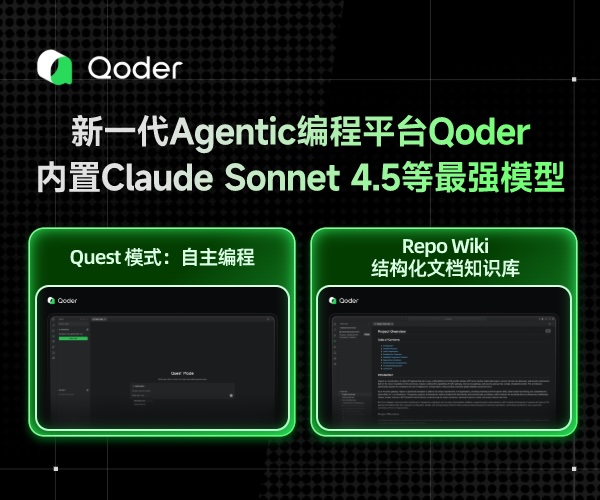第三周学习
神经网络
本节主要简单介绍了神经网络的相关知识,并且讲解了如何通过代码进行查看神经网络中的参数。
import torch
from torch import nn
from torch.nn import functional as F
net = nn.Sequential(nn.Linear(20, 256), nn.ReLU(), nn.Linear(256, 10))
X = torch.rand(2, 20)
net(X)
# 构建一个简单的网络
class MLP(nn.Module):
def __init__(self):
super().__init__()
self.hidden = nn.Linear(20, 256)
self.out = nn.Linear(256, 10)
def forward(self, X):
return self.out(F.relu(self.hidden(X)))
net = MLP()
net(X)
# 简单实现Sequential
class MySequential(nn.Module):
def __init__(self, *args):
super().__init__()
for block in args:
self._modules[block] = block
def forward(self, X):
for block in self._modules:
X = block(X)
return X
net = MySequential(nn.Linear(20, 256), nn.ReLU(), nn.Linear(256, 10))
net(X)
# 混合使用 Sequential 和继承 Module 构建网络
class NestMLP(nn.Module):
def __init__(self):
super().__init__()
self.net = nn.Sequential(nn.Linear(20, 64), nn.ReLU(),
nn.Linear(64, 32), nn.ReLU())
self.linear = nn.Linear(32, 16)
def forward(self, X):
return self.linear(self.net(X))
chimera = nn.Sequential(NestMLP(), nn.Linear(16, 20), FixedHiddenMLP())
chimera(X)
class FixedHiddenMLP(nn.Module):
def __init__(self):
super().__init__()
self.rand_weight = torch.rand((20, 20), requires_grad=False)
self.linear = nn.Linear(20, 20)
def forward(self, X):
X = self.linear(X)
X = F.relu(torch.mm(X, self.rand_weight) + 1)
X = self.linear(X)
while X.abs().sum() > 1:
X /= 2
return X.sum()
net = FixedHiddenMLP()
net(X)
import torch
from torch import nn
net = nn.Sequential(nn.Linear(4, 8), nn.ReLU(), nn.Linear(8, 1))
X = torch.rand(size=(2, 4))
net(X)
# 查看网络参数
print(net[2].state_dict())
print(type(net[2].bias))
print(net[2].bias)
print(net[2].bias.data)
print(net[2].bias.grad)
print(net[2].weight.grad)
print(net[2].weight)
print(*[(name, param.shape) for name, param in net[0].named_parameters()])
print(*[(name, param.shape) for name, param in net.named_parameters()])
net.state_dict()['2.bias'].data
def block1():
return nn.Sequential(nn.Linear(4, 8), nn.ReLU(), nn.Linear(8, 4), nn.ReLU())
def block2():
net = nn.Sequential()
for i in range(4):
net.add_module(f'block{i}', block1())
return net
rgnet = nn.Sequential(block2(), nn.Linear(4, 1))
rgnet(X)
print(rgnet)
def init_normal(m):
if type(m) == nn.Linear:
nn.init.normal_(m.weight, mean=0, std=0.01)
nn.init.zeros_(m.bias)
net.apply(init_normal)
net[0].weight.data[0], net[0].bias.data[0]
def init_constant(m):
if type(m) == nn.Linear:
nn.init.constant_(m.weight, 1)
nn.init.zeros_(m.bias)
net.apply(init_constant)
net[0].weight.data[0], net[0].bias.data[0]
def xavier(m):
if type(m) == nn.Linear:
nn.init.xavier_uniform_(m.weight)
def init_42(m):
if type(m) == nn.Linear:
nn.init.constant_(m.weight, 42)
net[0].apply(xavier)
net[2].apply(init_42)
print(net[0].weight.data[0])
print(net[2].weight.data)
def my_init(m):
if type(m) == nn.Linear:
print("Init",
*[(name, param.shape) for name, param in m.named_parameters()][0])
nn.init.uniform_(m.weight, -10, 10)
m.weight.data *= m.weight.data.abs() >= 5
net.apply(my_init)
net[0].weight[:2]
net[0].weight.data[:] += 1
net[0].weight.data[0, 0] = 42
net[0].weight.data[0]
# 共享参数的方法
shared = nn.Linear(8, 8)
net = nn.Sequential(nn.Linear(4,8), nn.ReLU(), shared, nn.ReLU(),
shared, nn.ReLU(), nn.Linear(8, 1))
net(X)
print(net[2].weight.data[0] == net[4].weight.data[0])
net[2].weight.data[0, 0] = 100
print(net[2].weight.data[0] == net[4].weight.data[0])
import torch
from torch import nn
import torch.nn.functional as F
class CenteredLayer(nn.Module):
def __init__(self):
super().__init__()
def forward(self, X):
return X - X.mean()
layer = CenteredLayer()
layer(torch.FloatTensor([1, 2, 3, 4, 5]))
net = nn.Sequential(nn.Linear(8, 128), CenteredLayer())
Y = net(torch.rand(4, 8))
Y.mean()
# 自己实现线性层,核心是使用 nn.Parameter
class MyLinear(nn.Module):
def __init__(self, in_units, units):
super().__init__()
self.weight = nn.Parameter(torch.randn(in_units, units))
self.bias = nn.Parameter(torch.randn(units, ))
def forward(self, X):
linear = torch.matmul(X, self.weight.data) + self.bias.data
return F.relu(linear)
linear = MyLinear(5, 3)
linear.weight
linear(torch.rand(2, 5))
net = nn.Sequential(MyLinear(64, 8), MyLinear(8, 1))
net(torch.rand(2, 64))
# 保存参数
import torch
from torch import nn
from torch.nn import functional as F
x = torch.arange(4)
torch.save(x, 'x-file')
x2 = torch.load('x-file')
x2
mydict = {'x': x, 'y': y}
torch.save(mydict, 'mydict')
mydict2 = torch.load('mydict')
mydict2
class MLP(nn.Module):
def __init__(self):
super().__init__()
self.hidden = nn.Linear(20, 256)
self.output = nn.Linear(256, 10)
def forward(self, X):
return self.output(F.relu(self.hidden(X)))
net = MLP()
X = torch.randn(size=(2, 20))
Y = net(X)
Y
# 保存学习的权重
torch.save(net.state_dict(), 'mlp.params')
# 加载学习到的权重
clone = MLP()
clone.load_state_dict(torch.load('mlp.params'))
clone.eval()
Y_clone = clone(X)
Y_clone == Y
GPU的使用
本节内容主要讲解了如何将数据和网络加载到 GPU 以提高训练速度
import torch
from torch import nn
torch.device('cpu'), torch.cuda.device('cuda'), torch.cuda.device('cuda:0')
def try_gpu(i=0):
if torch.cuda.device_count() >= i + 1:
return torch.device(f'cuda:{i}')
return torch.device('cpu')
def try_all_gpus():
devices = [
torch.device(f'cuda:{i}') for i in range(torch.cuda.device_count())]
return devices if devices else [torch.device('cpu')]
try_gpu(), try_gpu(10), try_all_gpus()
# 加载数据到 GPU
x = torch.tensor([1, 2, 3])
x.device
X = torch.ones(2, 3, device=try_gpu())
X
Y = torch.rand(2, 3, device=try_gpu(0))
Y
Z = X.cuda(0)
print(X)
print(Z)
Y + Z
Z.cuda(0) is Z
# 加载网络到 GPU
net = nn.Sequential(nn.Linear(3, 1))
net = net.to(device=try_gpu())
net(X)
net[0].weight.data.device
卷积层
本节主要讲解了卷积的概念和操作方法,以及代码的实现
import torch
from torch import nn
from d2l import torch as d2l
def corr2d(X, K):
# 计算二维互相关运算
h, w = K.shape
Y = torch.zeros((X.shape[0] - h + 1, X.shape[1] - w + 1))
for i in range(Y.shape[0]):
for j in range(Y.shape[1]):
Y[i, j] = (X[i: i+h, j: j+w] * K).sum()
return Y
X = torch.tensor([[0.0, 1.0, 2.0], [3.0, 4.0, 5.0], [6.0, 7.0, 8.0]])
K = torch.tensor([[0.0, 1.0], [2.0, 3.0]])
corr2d(X, K)
# 自己实现卷积
class Conv2D(nn.Module):
def __init__(self, kernel_size):
super().__init__()
self.weight = nn.Patameter(torch.rand(kernel_size))
self.bias = nn.Parameter(torch.zeros(1))
def forward(self, X):
return corr2d(X, self.weight) + self.bias
X = torch.ones((6, 8))
X[:, 2:6] = 0
X
K = torch.tensor([[1.0, -1.0]])
Y = corr2d(X, K)
Y
corr2d(X.t(), K)
# 使用 pytorch 实现的卷积
conv2d = nn.Conv2d(1, 1, kernel_size=(1, 2), bias=False)
X = X.reshape((1, 1, 6, 8))
Y = Y.reshape((1, 1, 6, 7))
for i in range(10):
Y_hat = conv2d(X)
l = (Y_hat - Y) ** 2
conv2d.zero_grad()
l.sum().backward()
conv2d.weight.data[:] -= 3e-2 * conv2d.weight.grad
if (i + 1) % 2 == 0:
print(f'batch {i+1}, loss {l.sum(): .3f}')
conv2d.weight.data.reshape((1, 2))
步幅和填充
本节主要讲解了通过改变步幅和对图形填充来改变图形的尺寸大小,使图像更适合训练
import torch
from torch import nn
def comp_conv2d(conv2d, X):
X = X.reshape((1, 1) + X.shape)
Y = conv2d(X)
return Y.reshape(Y.shape[2:])
# 使用 pytorch 自带的填充进行操作
conv2d = nn.Conv2d(1, 1, kernel_size=3, padding=1)
X = torch.rand(size=(8, 8))
comp_conv2d(conv2d, X).shape
conv2d = nn.Conv2d(1, 1, kernel_size=(5, 3), padding=(2, 1))
comp_conv2d(conv2d, X).shape
# 使用 pytorch 自带的步幅进行操作
conv2d = nn.Conv2d(1, 1, kernel_size=3, padding=1, stride=2)
comp_conv2d(conv2d, X).shape
conv2d = nn.Conv2d(1, 1, kernel_size=(3, 5), padding=(0, 1), stride=(3, 4))
comp_conv2d(conv2d, X).shape
多输入多输出通道
本节内容较为重要,是神经网络中大家经常调节的参数
import torch
from d2l import torch as d2l
# 定义互相关运算
def corr2d_multi_in(X, K):
return sum(d2l.corr2d(x, k) for x, k in zip(X, K))
X = torch.tensor([[[0.0, 1.0, 2.0], [3.0, 4.0, 5.0], [6.0, 7.0, 8.0]],
[[1.0, 2.0, 3.0], [4.0, 5.0, 6.0], [7.0, 8.0, 9.0]]])
K = torch.tensor([[[0.0, 1.0], [2.0, 3.0]], [[1.0, 2.0], [3.0, 4.0]]])
corr2d_multi_in(X, K)
def corr2d_multi_in_out(X, K):
return torch.stack([corr2d_multi_in(X, k) for k in K], 0)
K = torch.stack((K, K + 1, K + 2), 0)
K.shape
corr2d_multi_in_out(X, K)
# 1x1 卷积进行通道数的调整
def corr2d_multi_in_out_1x1(X, K):
c_i, h, w = X.shape
c_o = K.shape[0]
X = X.reshape((c_i, h*w))
print(X)
K = K.reshape((c_o, c_i))
print(K)
Y = torch.matmul(K, X)
print(Y)
return Y.reshape((c_o, h, w))
X = torch.normal(0, 1, (3, 3, 3))
K = torch.normal(0, 1, (2, 3, 1, 1))
print(X)
print(K)
Y1 = corr2d_multi_in_out_1x1(X, K)
Y2 = corr2d_multi_in_out(X, K)
assert float(torch.abs(Y1 - Y2).sum()) < 1e-6
池化层
本节内容主要讲解了池化操作,分为最大值池化和平均值池化两种
import torch
from torch import nn
from d2l import torch as d2l
# 自定义简单的二维池化
def pool2d(X, pool_size, mode='max'):
p_h, p_w = pool_size
Y = torch.zeros(X.shape[0] - p_h +1, X.shape[1] - p_w + 1)
for i in range(Y.shape[0]):
for j in range(Y.shape[1]):
if mode == 'max':
Y[i, j] = X[i: i + p_h, j: j + p_w].max()
elif mode == 'avg':
Y[i, j] = X[i: i + p_h, j: j + p_w].mean()
return Y
X = torch.tensor([[0.0, 1.0, 2.0], [3.0, 4.0, 5.0], [6.0, 7.0, 8.0]])
pool2d(X, (2, 2))
pool2d(X, (2, 2), 'avg')
X = torch.arange(16, dtype=torch.float32).reshape(1, 1, 4, 4)
X
# 使用 pytorch 自带的池化操作
pool2d = nn.MaxPool2d(3)
pool2d(X)
pool2d = nn.MaxPool2d(3, padding=1, stride=2)
pool2d(X)
pool2d = nn.MaxPool2d((2, 3), padding=(1, 1), stride=(2, 3))
pool2d(X)
X = torch.cat((X, X+1), 1)
X
pool2d = nn.MaxPool2d(3, padding=1, stride=2)
pool2d(X)
LeNet
LeNet 是较为简单的网络,操作较少,性能相对于现在的网络来说比较差,但在当时是很先进的网络
import torch
from torch import nn
from d2l import torch as d2l
class Reshape(nn.Module):
def forward(self, x):
return x.view(-1, 1, 28, 28)
# LeNet 的网络结构
net = nn.Sequential(Reshape(), nn.Conv2d(1, 6, kernel_size=5, padding=2),
nn.Sigmoid(), nn.AvgPool2d(kernel_size=2, stride=2),
nn.Conv2d(6, 16, kernel_size=5), nn.Sigmoid(),
nn.AvgPool2d(kernel_size=2, stride=2), nn.Flatten(),
nn.Linear(16*5*5, 120), nn.Sigmoid(),
nn.Linear(120, 84), nn.Sigmoid(),
nn.Linear(84, 10))
X = torch.rand(size=(1, 1, 28, 28), dtype=torch.float32)
for layer in net:
X = layer(X)
print(layer.__class__.__name__, 'output shape: \t', X.shape)
# 加载数据集
batch_size = 256
train_iter, test_iter, = d2l.load_data_fashion_mnist(batch_size=batch_size)
# 计算准确率
def evaluate_accuracy_gpu(net, data_iter, device=None):
if isinstance(net, torch.nn.Module):
net.eval()
if not device:
device = next(iter(net.parameters())).device
metric = d2l.Accumulator(2)
for X, y in data_iter:
if isinstance(X, list):
X = [x.to(device) for x in X]
else:
X = X.to(device)
y = y.to(device)
metric.add(d2l.accuracy(net(X), y), y.numel())
return metric[0] / metric[1]
# 训练函数
def train_ch6(net, train_iter, test_iter, num_epochs, lr, device):
def init_weights(m):
if type(m) == nn.Linear or type(m) == nn.Conv2d:
nn.init.xavier_uniform_(m.weight)
net.apply(init_weights)
print('train on', device)
net.to(device)
optimizer = torch.optim.SGD(net.parameters(), lr=lr)
loss = nn.CrossEntropyLoss()
animator = d2l.Animator(xlabel='epoch', xlim=[1, num_epochs],
legend=['train loss', 'train acc', 'test acc'])
timer, num_batches = d2l.Timer(), len(train_iter)
for epoch in range(num_epochs):
metric = d2l.Accumulator(3)
net.train()
for i, (X, y) in enumerate(train_iter):
timer.start()
optimizer.zero_grad()
X, y = X.to(device), y.to(device)
y_hat = net(X)
l = loss(y_hat, y)
l.backward()
optimizer.step()
with torch.no_grad():
metric.add(l * X.shape[0], d2l.accuracy(y_hat, y), X.shape[0])
timer.stop()
train_l = metric[0] / metric[2]
train_acc = metric[1] / metric[2]
if (i + 1) % (num_batches // 5) == 0 or i == num_batches - 1:
animator.add(epoch + (i + 1) / num_batches,
(train_l, train_acc, None))
test_acc = evaluate_accuracy_gpu(net, test_iter)
animator.add(epoch + 1, (None, None, test_acc))
print(f'loss {train_l:.3f}, train acc {train_acc:.3f}, '
f'test acc{test_acc:.3f}')
print(f'{metric[2] * num_epochs / timer.sum():.1f} examples/sec '
f'on {str(device)}')
# 进行训练
lr, num_epochs = 0.9, 10
train_ch6(net, train_iter, test_iter, num_epochs, lr, d2l.try_gpu())
猫狗大战
尝试进行训练,发现不收敛,准备继续尝试修改代码和参数






 浙公网安备 33010602011771号
浙公网安备 33010602011771号